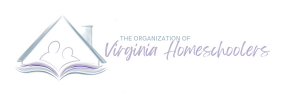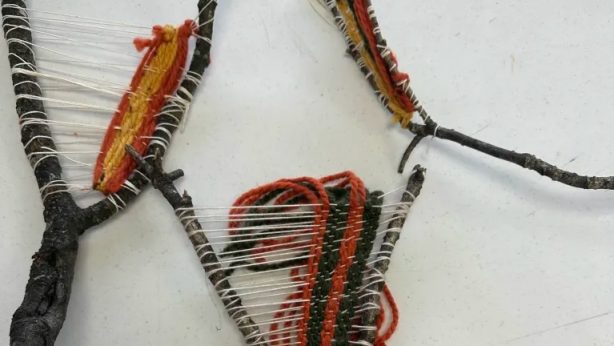Homeschooling Your Way: Theories & Approaches
If you’ve started your homeschool journey and are completely overwhelmed with the options, you are not alone.
There are eight widely accepted main approaches to homeschooling: Classical, Charlotte Mason, Montessori, Unschooling, School-at-Home, Unit studies, Waldorf, and Eclectic education methods.
We’re going to explore a brief description of each to help you decide which route may be best for your family.
Classical Education
Classical education is an approach I feel most people, especially those who are not homeschooling, are familiar with. This approach relies on the theory of the Trivium (Latin for “the place where the roads meet”) as a framework for education. The Trivium contains three stages of learning: Grammar, Logic, and Rhetoric. The Grammar stage sets children up for success by teaching the mechanics of language. Logic incorporates complex thought and analysis. The final state, Rhetoric, uses gained wisdom to instruct and persuade others. These stages are taught through the use of classical literature and writings.
Classical education can be combined with biblical teachings, but does not need to be and can be a secular education. The main goal is to cultivate a passion for learning by developing a connection with learning across the ages.
This style tends to be more inflexible and includes a copious amount of reading.
Charlotte Mason
“The question is not, — how much does the youth know when he has finished his education — but how much does he care? And about how many orders of things does he care? In fact, how large is the room in which he finds his feet set? And, therefore, how full is the life he has before him?”– Charlotte Mason, School Education: Developing A Curriculum
At the core, a Charlotte Mason education is the belief that children deserve to be respected as people and learn best in real-life situations, with a strong emphasis on nature and music.
Much like the Trivium of Classical Education, Charlotte Mason called for a three-pronged approach, believing that the entire child must be educated and not just the mind. She urged for an ‘Atmosphere’ of learning, a ‘Discipline’ of good habits, specifically habits of character, and a ‘Life’ of learning, teaching children how to live and think, not dry facts, a concept also very similar to Classical Learning.
Her approach used what she called ‘living books’, books written as a story by authors passionate about topics. These books are paired with oral narrations of information and book summaries to solidify learning.
School-at-Home
This approach replicates your local public or private classroom at home. Many times parents choose ‘box curriculums’ that include all the supplies needed, but they can also be pieced together with the help of resources such as Teachers Pay Teachers or Open Education Global. Other options include all-in-one online programs, many of which offer teacher assistance.
I noted above that this is often modeled off local school systems, as this is generally what parents are familiar with, but school systems and approaches can vary widely. Know that there is not one “correct” way to model a school-at-home approach. Many school systems are moving toward more child-directed learning and mixed-age classrooms. You’re free to create, or recreate, your ‘school’ however you want.
Unit studies
Unit studies break education into ‘units’ comprised of a topic or theme. These units are then used to teach multiple subjects until it is thoroughly explored. This is very popular in families with multiple children of varying ages as the topic/theme can be customized to each child, while still learning about the same things. This method can be incorporated into other approaches, such as Charlotte Mason, Unschooling, and even Classical Education at times.
Students may study topics such as Rainforests, reading about the plants and animals that live within them, using geometry to calculate area and estimate plants or animals per squared mile, learn how indigenous people use the land, and conduct experiments on growing plants in different environments, read about the history of the area and ways to help conservation efforts, etc.
Waldorf
“The need for imagination, a sense of truth, and a feeling of responsibility; these are the very nerve of education.” – Rudolf Steiner
Popularized by Rudolf Steiner in Europe in the late 19th and early 20th centuries, the Waldorf method is a holistic education focused on activities and experiences. He believed in the integration of arts and movement in all areas of education to create a well-balanced, multi-skilled, and emotionally strong adult. Educational techniques take into account the developmental state of the child, using play and imagery for younger children and postponing the use of technology until years. He swapped textbooks for fairy tales, fables, and myths.
Steiner Waldorf also believed that the mind, body, and spirit need to be educated. He argued that it was not until the body and spirit were whole that the mind could be educated.
The approaches above all have one main thing in common, what is learned is chosen by the educator. The following few approaches take the opposite view, believing the child should choose what is learned and how.
Montessori
“Play is the work of the child” – Maria Montessori
The Montessori philosophy is centered on valuing each child as unique and individual. Creativity and curiosity are encouraged, and children are empowered to seek knowledge. Active, hands-on learning is provided through an environment set up for success. Books, nature items, craft supplies, building tools, and imaginative play are accessible and unrestricted. The child is free to choose their learning adventure with guidance, encouraging positive behaviors, and conflict resolution. Students are also guided to find connections between traditional subjects. The thought is that the early ‘classroom’ is preparation for the real learning environment; life.
Unschooling
“Birds fly, fish swim, man thinks and learns. Therefore, we do not need to motivate children into learning by wheedling, bribing, or bullying. We do not need to keep picking away at their minds to make sure they are learning. What we need to do, and all we need to do, is bring as much of the world as we can into the school and classroom (in our case, into their lives); give children as much help and guidance as they ask for; listen respectfully when they feel like talking; and then get out of the way. We can trust them to do the rest.” – John Holt, leader of the unschooling philosophy.
At its heart, unschooling trusts the child to know what they need to learn to be successful. It is not a passive learning process, as some may believe based on the name, but rather an active, engaging process led by the interests and curiosity of the child. They are encouraged to deeply explore, with the guidance and assistance of the parent or educator, topics they genuinely want to gain knowledge about organically. Traditional constraints, such as when a topic should be learned or when learning should occur, are ignored, instead nurturing the child’s natural curiosity, whenever.
Eclectic
The eclectic style is what the name would suggest, a mix of all the possible theories and approaches to education. The educator or parent personalizes and individualizes the child’s education, borrowing from multiple styles to create a wholesome and satisfying educational experience.
Other
I feel it’s necessary to add that there are many more options to incorporate into your homeschooling journey, from Roadschooling (traveling to places to learn about them in depth) to Gameschooling (using board games, video games, etc. to learn everything from math to history, science, and everything in between), homeschoolers have found so many creative and engaging ways to learn about our world around us and share that knowledge with others.
After all, isn’t that what education is about? Sharing what we’ve learned in hopes to better the world around us.
*It is important to note that while some of these are traditionally rooted in a religious mindset, any of these theories or styles can be adopted in a secular manner. We hope that you’ve learned something new and this will help you and your family find the perfect homeschooling situation for you!
Opinions expressed by individual writers in this blog do not necessarily reflect the views of the Board of Directors of The Organization of Virginia Homeschoolers, nor do they represent an official position of VaHomeschoolers. Writers’ views are their own, and readers are encouraged to research and explore homeschooling issues to their satisfaction.


